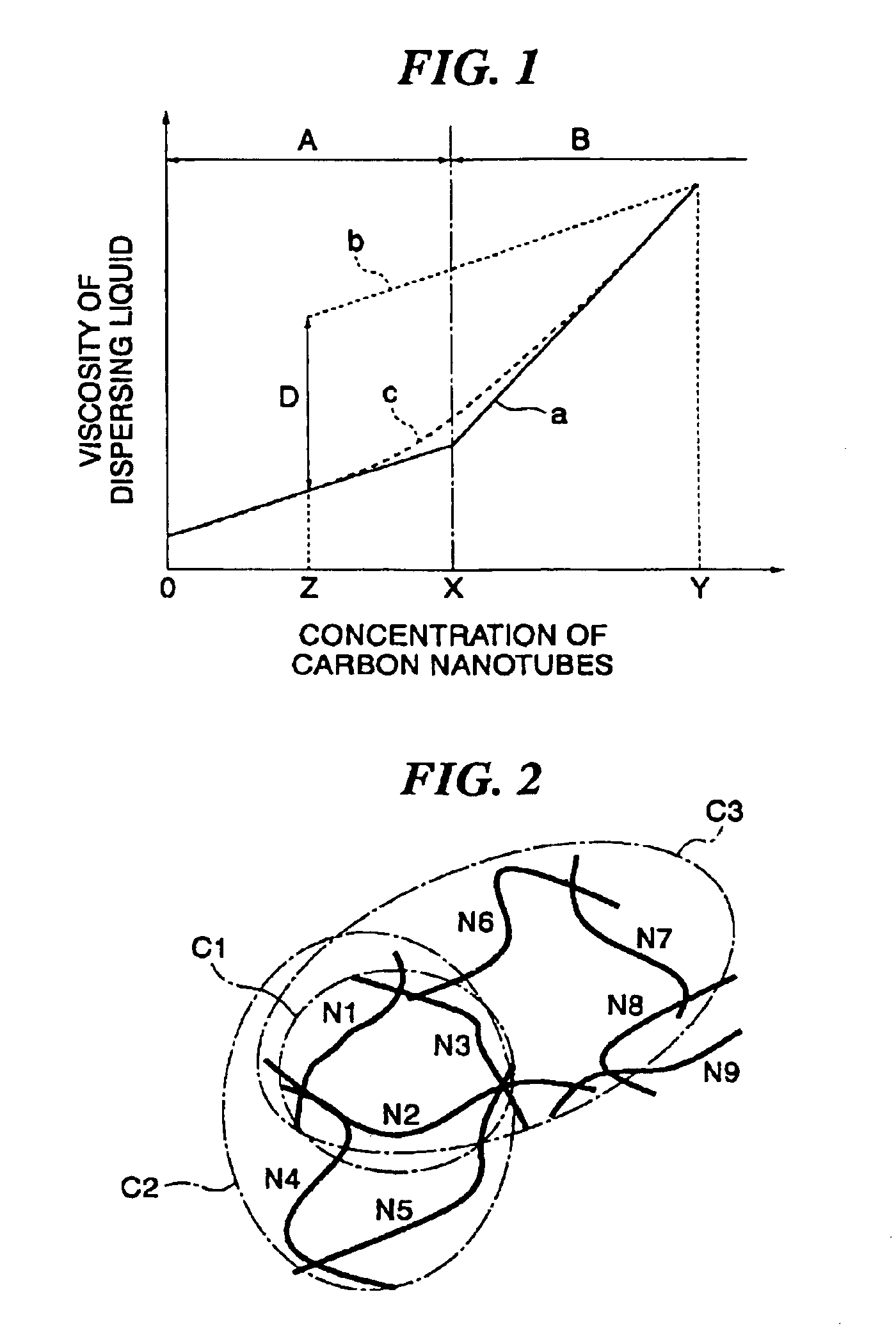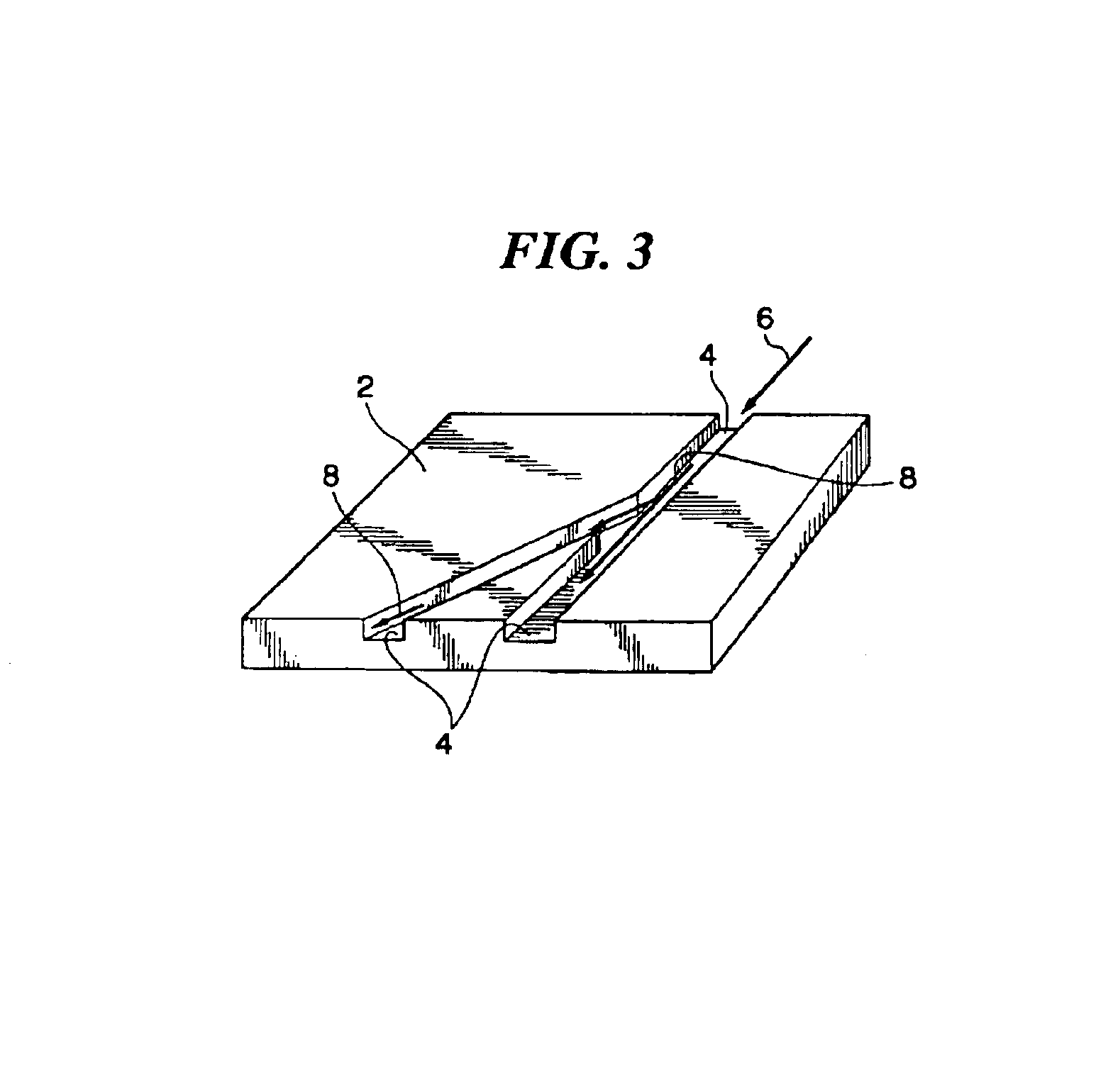Carbon nanotube structures, carbon nanotube devices using the same and method for manufacturing carbon nanotube structures
a carbon nanotube and carbon nanotube technology, applied in the direction of instruments, semiconductor/solid-state device details, transportation and packaging, etc., can solve the problems of difficult handling, difficult handling and expensiveness, and the production of a single type of carbon nanotubes has not yet been achieved, so as to achieve less carbon nanotube structures and easy manufacturing
- Summary
- Abstract
- Description
- Claims
- Application Information
AI Technical Summary
Benefits of technology
Problems solved by technology
Method used
Image
Examples
first embodiment
(First Embodiment)
[0162]FIG. 8 is a schematic perspective view showing a first embodiment of the carbon nanotube structure of the invention. A carbon nanotube structure 68 made of the carbon nanotubes 64 is fixed on almost the whole surface of a planar board 62. The carbon nanotubes 64 with several μm to several-ten μm in length are in contact with each other to form an electric conductive network. For this reason, conductivity is attained on the surface of the planar board 62. FIG. 9 is an electronic microscopic picture (magnified by a factor of 30000) showing the carbon nanotube structures 68, which is an embodiment of the invention. Note that some error has occurred in the magnification of the picture because of its large scale.
[0163]The carbon nanotube structures 68, which is an embodiment of the invention, can be attained by applying the high-viscosity dispersion medium W to the surface of the planar board 62 by spin coating and drying it.
[0164]If any of transparent materials s...
second embodiment
(Second Embodiment)
[0176]FIG. 11 is a schematic plan view showing the second embodiment of the carbon nanotube structure of the invention. On a surface of a given planar board 72, a carbon nanotube structure 78 made of carbon nanotubes 74 is fixed. In the embodiment, the carbon nanotube structure 78 in which the carbon nanotubes 74 are arranged along the desired patterning, is formed.
[0177]The carbon nanotube structure 78 of the embodiment can be manufactured as follows.
[0178]Using any of materials such as glass sheets and mica sheets, a hydrophobic surface is formed by applying the water-repellent treatment at the parts other than the patterning 76 on the surface of the planar board 72 to achieve the patterning 76 as shown in FIG. 11B. Then, only the patterning part 76 has hydrophobicity. Note that in the embodiment, using a silane coupling agent, the water-repellent treatment is applied.
[0179]Using the high-viscosity dispersing liquid W, in which a water-soluble medium is used for...
third embodiment
(Third Embodiment)
[0182]FIG. 12 is a schematic perspective view showing the third embodiment of the carbon nanotube structure of the invention. In the figure, convex parts 10 made of gold fine particles formed on the given planar board 12 are bound on the carbon nanotube structure 88 made of the carbon nanotubes 84.
[0183]In the third embodiment, first the convex parts 10 made of gold fine particles are formed on the planar board 12 as shown in FIG. 4A. Specifically, the convex parts 10 distributed like islands are formed by evaporating 20 nm of gold on the surface of the glass sheet, which is the planar board 12 and heating it. By spin-coating the high-viscosity dispersion medium to linked among and cover the whole gold fine particles like islands, the carbon nanotube structure 88 is formed.
[0184]In the embodiment, the convex parts 10 of gold fine particles like islands which are separated from each other, are electrically connected by the carbon nanotube structure 88.
PUM
| Property | Measurement | Unit |
|---|---|---|
| thickness | aaaaa | aaaaa |
| diameter | aaaaa | aaaaa |
| emission current | aaaaa | aaaaa |
Abstract
Description
Claims
Application Information
 Login to View More
Login to View More - R&D
- Intellectual Property
- Life Sciences
- Materials
- Tech Scout
- Unparalleled Data Quality
- Higher Quality Content
- 60% Fewer Hallucinations
Browse by: Latest US Patents, China's latest patents, Technical Efficacy Thesaurus, Application Domain, Technology Topic, Popular Technical Reports.
© 2025 PatSnap. All rights reserved.Legal|Privacy policy|Modern Slavery Act Transparency Statement|Sitemap|About US| Contact US: help@patsnap.com



